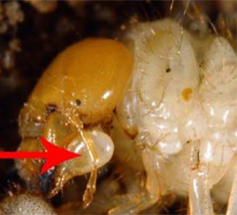Southeast Michigan vegetable update – May 15, 2019
Growers are finding pockets of productivity in the cold and rain.

Weather
An incoming weather system will likely bring some rain in the next two days. The cool and warm fronts that follow mean chances of rain through the weekend. Michigan State University agricultural meteorologist Jeff Andresen thinks frost is unlikely from here on out. I haven’t heard of any frost damage due to last week’s cool overnight temperatures.
The table below shows rainfall totals for the Michigan State University Enviroweather stations in southeast Michigan, as well as degree-days calculated using the Baskerville-Emin Method. Degree-day average for Commerce and Hudson is over five years, while Deerfield is over two years. Soil temperature range in Fahrenheit at 2-inch soil depth over the last week, and rainfall is in inches, with number in parenthesis indicating rainfall since the last report. For a refresher on degree-days and how to get this information in your area, see “Accessing growing degree days with Enviro-weather” from MSU Extension.
|
Rainfall and degree-days totals as of May 15 |
|||||
|---|---|---|---|---|---|
|
Station |
Degree days (base 42) |
Degree days (base 50) |
5-Year degree day average (base 50) |
Soil temperature range |
Rainfall since April 1st |
|
Commerce |
427 |
123 |
200.4 |
47.3-56.2 |
5.58 (+0.11) |
|
Deerfield |
412 |
165 |
253.5 |
42.9-68.9 |
5.78 (+0.77) |
|
Hudson |
359 |
145 |
224 |
48.3-54.6 |
5.47 (+0.36) |
General information
My trapping indicates that the weather front on May 8 brought a significant number of black cutworm moths into the region. Recently emerged corn and transplants can be cut by the caterpillars. Be on the lookout for feeding starting early next week for southern portions of our area, and a week from now for more northern areas (90 degree days base 50 from egglaying on May 8). When the caterpillars are small, they can only feed on the leaf edges. They become large enough to cut plants at 300 degree days (base 50), and just because we got moths doesn’t mean sprays should be scheduled. It is useful to look for feeding damage first (Photo 1). Moths are attracted to green vegetation when laying eggs, so fields that had green cover crops or winter annual weeds in the last 10 days are potential egglaying sites. Tillage in these areas helps bury eggs.
I’ve also heard some complaints about biodegradable plastic not breaking down. Make sure you understand what kind of plastic mulch you are using. Oxo-degradeable mulches break down in sunlight and oxygen, but research shows it does not break down in field conditions. Mulches that can break down are partially dependent on the activities of soil-dwelling bacteria and earthworms. University of Tennessee has a useful resource hub on biodegradeable mulches that summarizes benefits, costs and more.
Crop reports
Asparagus harvest continues. If you are having problems with asparagus beetles, see tips for control in Ben Werling’s article, “Controlling common asparagus beetle during harvest season.”
Cole crop planting continues. Cabbage maggot flight is ongoing, the Deerfield Enviroweather station is predicting that peak flight of cabbage maggot flies will be Thursday or Friday of next week. In fields I was in last week, I saw sporadic wireworm damage and wirestem.
Garlic is doing well. Bulb setting will begin in late May as the days get longer. This means that plants stop growing as rapidly and start directing most of their energy to the bulb. Pushing vegetative growth in the spring will result in larger bulbs—40 pounds per acre of nitrogen in early May is recommended. For more information on garlic fertilization and production, see “Producing Garlic in Michigan.”
Potato emergence has been slow this year. The MSU Potato Pathology Lab has released its prediction for volunteer potato survival. They are predicting a low survival based on information provided by the Deerfield Enviroweather station, and high survival based on information from the Commerce Enviroweather station. For more information, see “Potential survival of potato volunteers in Michigan, 2019.”

More sweet corn plantings are emerging, and planting continues as field conditions allow. Some seedlings are discolored as the cool weather makes nutrients less available. There have been increased reports of Asiatic garden beetles in our area, and the grubs have moved into the upper parts of the soil. These insects feed on the corn roots and can cause uneven stands when present in high numbers. They also feed on the roots of many weeds, including chickweed, henbit and marestail. They prefer sandier soils and can drown in saturated soils.
The key thing to look for in figuring out if a grub is an Asiatic garden beetle as opposed to some of its relatives is to look on the head. If the grub is an Asiatic garden beetle, there will be a large, white bulb near the mouth (Photo 2). If you’ve ended up with uneven sweet corn stands in the last couple of years, this is a grub to look for.
Both processing and staked tomatoes have been planted. See the cutworm note above.
Zucchini and summer squash have gone in on plastic under low tunnels. Some winter squash on plastic has gone in this way as well. Note that tunnels may not be as effective as normal, as they need sunshine to really get warm, and sunshine has been hard to come by this spring.
Meetings
Save the date! The 2019 Great Lakes Fruit, Vegetable, and Farm Market EXPO is scheduled for Dec. 10-12 in Grand Rapids, Michigan.



 Print
Print Email
Email

